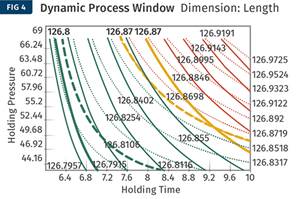CAM Adds Agility to Custom Thermoformer
CNC machining permeates ATI’s business, making its operations more efficient and responsive.
Not surprising, given its name, the business of Associated Thermoforming Inc. (ATI) revolves around thermoforming. But another technology—computer-aided manufacturing (CAM)—has played an important role in improving the processor’s productivity, reducing lead times along with operating costs.
Based in Berthoud, Colo., ATI is a custom former that specializes in producing technically challenging, heavy-gauge parts via vacuum forming, pressure forming, and twin-sheet thermoforming. In business for more than 30 years, ATI’s primary markets are medical, aerospace, and general indus- trial products. These are formed in thicknesses from 0.030 to 0.50 in. from acrylic, ABS, PE, PC, and several other resins.
The requirements of ATI’s customer base are diverse, and the firm likes to fulfill them in-house whenever possible. To that end, ATI has acquired an extensive array of CNC machining equipment, including multiple three- and four-axis vertical mills (used for cutting thermoforming mold components and fixtures, and to complete secondary operations on formed parts) along with seven sophisticated double-table 5-axis routers used for automated trimming. All of this equipment is programmed using Mastercam CAD/CAM software from CNC Software Inc. (Mastercam / CNC Software, Inc., Tolland, Conn.
Twin-sheet forming is an ATI specialty; the company has developed the tooling and knowledge to hide the parting line to produce highly cosmetic parts. Tools for this process require provision for locating inserts within the twin-sheet structure. ATI is also adept at producing formed components having features with substantial undercuts. These increase toolmaking complexity by requiring either additional moving components within the mold, or if the feature can be pulled, the ability to create precise cavities using long tools to reach into the undercut for accurate material removal and finishing.
In the tooling department, Aaron Frison, tooling supervisor, and two others rely on Mastercam to create efficient CNC manufacturing strategies for making mold components with his shop’s trio of three-axis vertical mills. They begin their CNC programming process by importing a Solidworks CAD file developed by ATI’s mold designer, who starts with a part model provided by the customer. Frison singles out a number of important CAM capabilities that make him and his programmers more productive:
• Managing operations: The tool design delivered to the CNC programmers may require dozens of manufacturing operations. Rather than separate the mold into files for each individual component, Mastercam’s Operations Manager breaks out all of the individual parts into their own machine and tool groups so that programmers can attack their work from within a single CAM file. This feature saves many hours before and during programming work— 10-15% of the total job, by Frison’s estimate.
• Work coordinates: The software automatically preserves the orientation of each operation within the CAM file in its Work Coordinate System. This feature is also a big time saver because it automatically snaps the users into the proper coordinates as they navigate between different parts and operations.
• Toolpath simulation: Programmers routinely use Mastercam’s simulation features to verify that a program will remove the exact amount of material required and that there are no tool interferences. This gives them the confidence to run at optimal speeds, without the fear of having a crash that might damage the machine or result in scrap.
• Dynamic motion: ATI uses toolpaths incorporating Mastercam’s Dynamic Motion technology whenever possible. This technology takes into account the material conditions ahead of the tool and continually adjusts feeds, speeds, and cutting motions to maintain a constant chip load. Frison comments, “With Dynamic Motion, we can use a long tool to reach into deep undercuts and not worry about deflection. It is just a much smoother toolpath and it gives better finishes as well as improved cycle times. For cavity work, we have probably reduced our machining cycles by at least 25% on average, and our carbide end mills last a lot longer, so our cutting-tool costs have gone down.”
Related Content
Optimizing Pack & Hold Times for Hot-Runner & Valve-Gated Molds
Using scientific procedures will help you put an end to all that time-consuming trial and error. Part 1 of 2.
Read MoreWhere and How to Vent Injection Molds: Part 3
Questioning several “rules of thumb” about venting injection molds.
Read MoreTunnel Gates for Mold Designers, Part 1
Of all the gate types, tunnel gates are the most misunderstood. Here’s what you need to know to choose the best design for your application.
Read MoreHow to Select the Right Tool Steel for Mold Cavities
With cavity steel or alloy selection there are many variables that can dictate the best option.
Read MoreRead Next
Troubleshooting Screw and Barrel Wear in Extrusion
Extruder screws and barrels will wear over time. If you are seeing a reduction in specific rate and higher discharge temperatures, wear is the likely culprit.
Read MoreUnderstanding Melting in Single-Screw Extruders
You can better visualize the melting process by “flipping” the observation point so that the barrel appears to be turning clockwise around a stationary screw.
Read MorePeople 4.0 – How to Get Buy-In from Your Staff for Industry 4.0 Systems
Implementing a production monitoring system as the foundation of a ‘smart factory’ is about integrating people with new technology as much as it is about integrating machines and computers. Here are tips from a company that has gone through the process.
Read More























